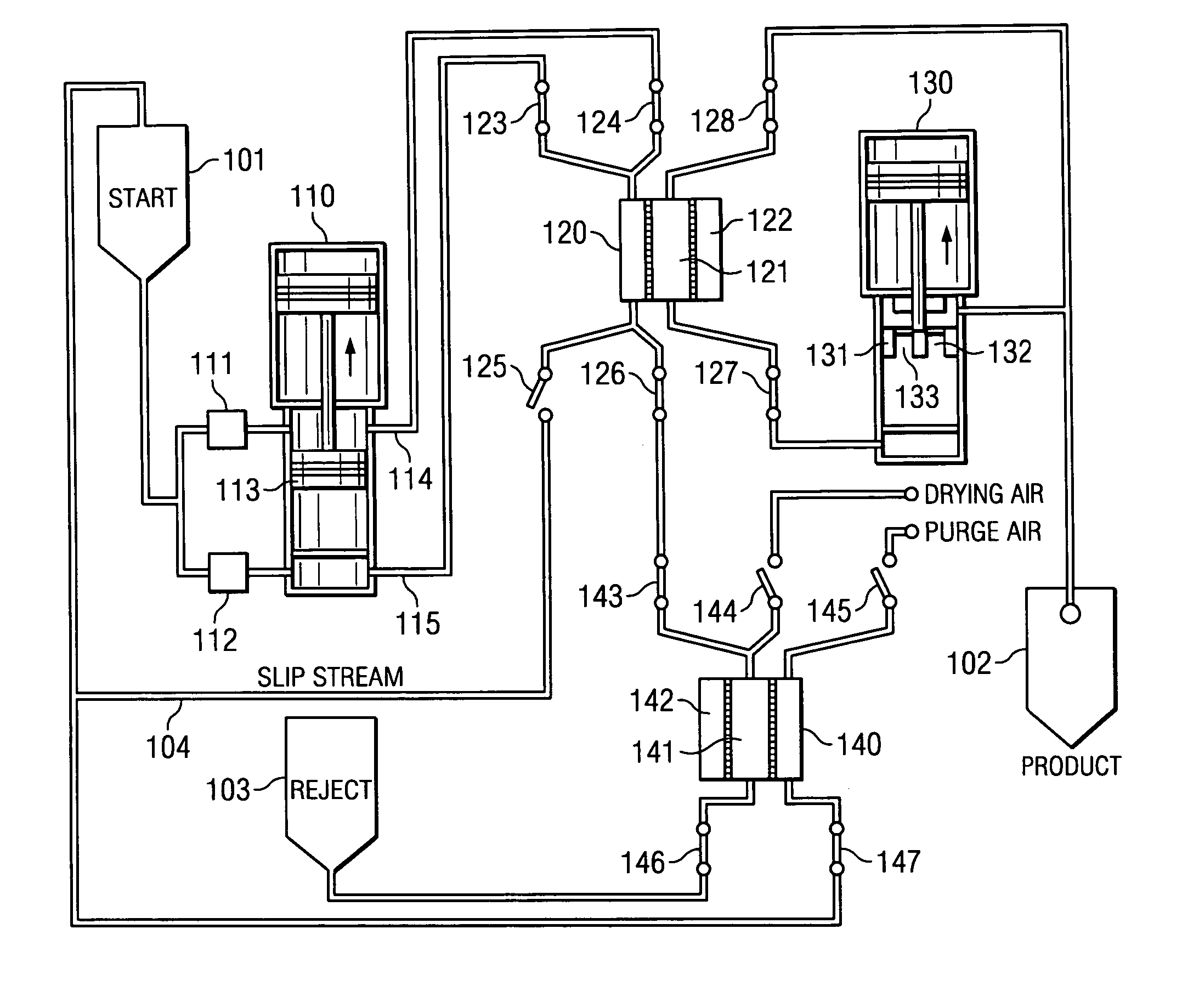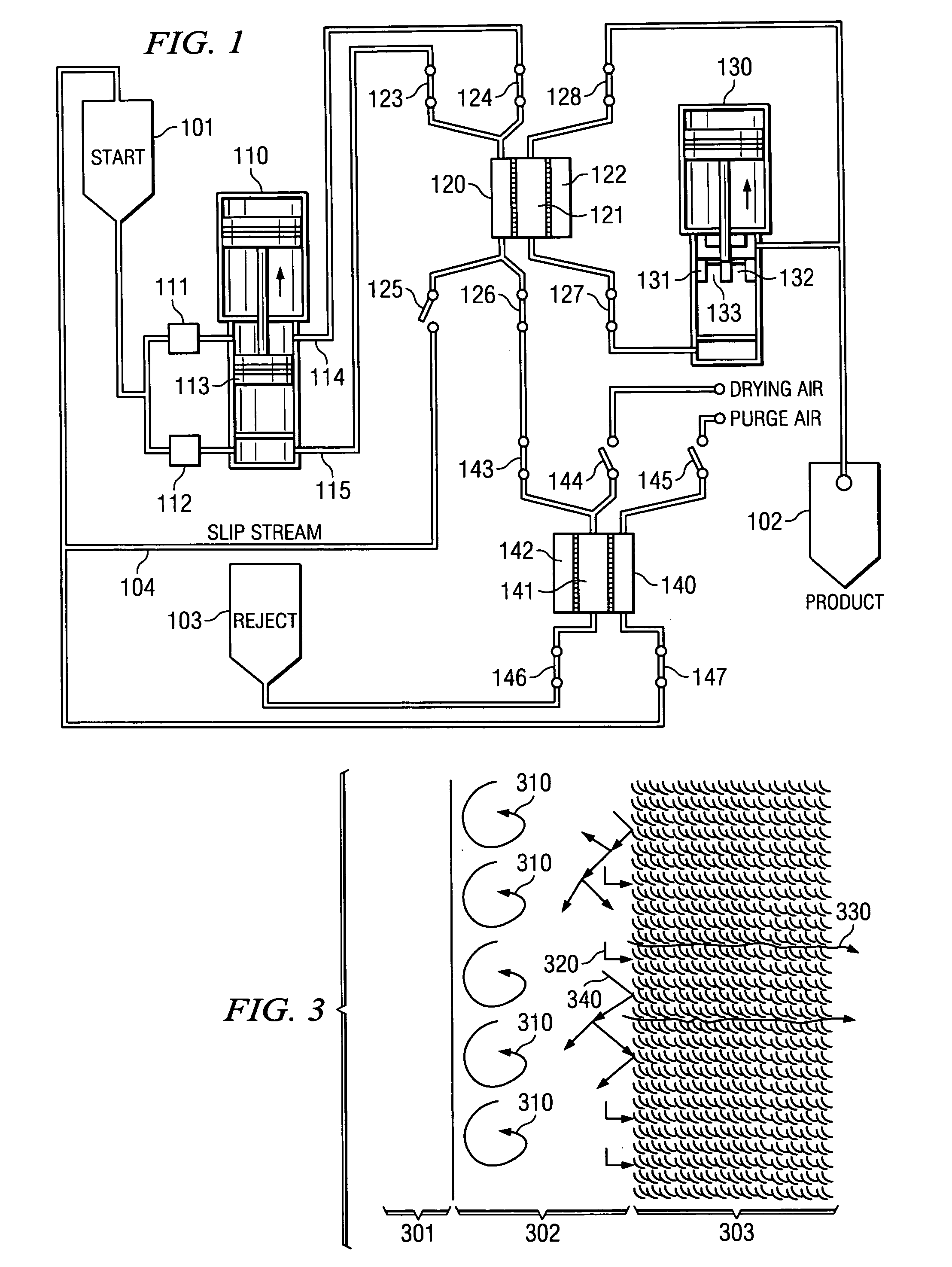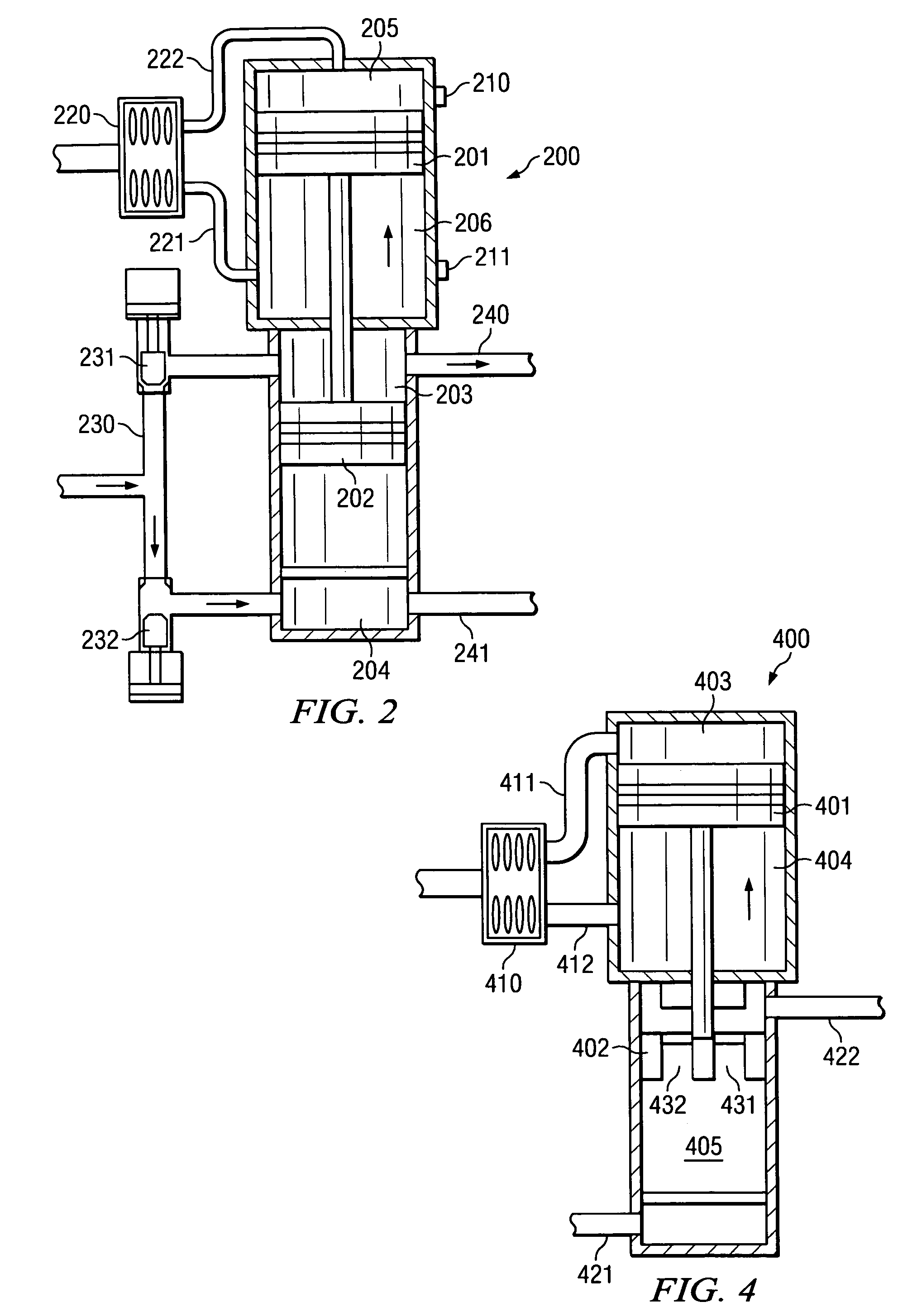Aircraft rinse system
a technology for aircraft and rinse, which is applied in the direction of centrifugal force sediment separation, water/sewage treatment, osmosis/dialysis, etc. it can solve the problems of excessive discharge of detergents and other chemicals, undesirable presence of suspended and/or dissolved solids in water, wastewater and other fluids, etc., to reduce aircraft downtime and maintenance expenses, reduce the amount of corrosion, and easy rinse
- Summary
- Abstract
- Description
- Claims
- Application Information
AI Technical Summary
Benefits of technology
Problems solved by technology
Method used
Image
Examples
Embodiment Construction
[0050] Referring now to FIG. 1, a schematic diagram illustrating the interaction of the functional components of the molecular separator is depicted in accordance with the present invention. An untreated fluid containing suspended particles and dissolved matter is placed in a in starting or contaminated fluid storage tank 101. This untreated fluid may include contaminated water, industrial solvents, or any similar fluid or solid from which sub-fractions are to be separated. The present invention can separate liquid from liquid, gases from liquids, and gases from solids. For example, the untreated fluid might be water contaminated with oil, iron, lead or other toxins or waste products. Another example of the fluid to be treated is brine made of zinc bromide (often used to flush drilling holes) from which dissolved solutes are removed such as iron.
[0051] The filtration process begins by drawing the untreated fluid from the starting tank 101 by means of a first pneumatic pump 110. The...
PUM
| Property | Measurement | Unit |
|---|---|---|
| particle sizes | aaaaa | aaaaa |
| time period | aaaaa | aaaaa |
| pressure | aaaaa | aaaaa |
Abstract
Description
Claims
Application Information
 Login to View More
Login to View More - R&D
- Intellectual Property
- Life Sciences
- Materials
- Tech Scout
- Unparalleled Data Quality
- Higher Quality Content
- 60% Fewer Hallucinations
Browse by: Latest US Patents, China's latest patents, Technical Efficacy Thesaurus, Application Domain, Technology Topic, Popular Technical Reports.
© 2025 PatSnap. All rights reserved.Legal|Privacy policy|Modern Slavery Act Transparency Statement|Sitemap|About US| Contact US: help@patsnap.com



